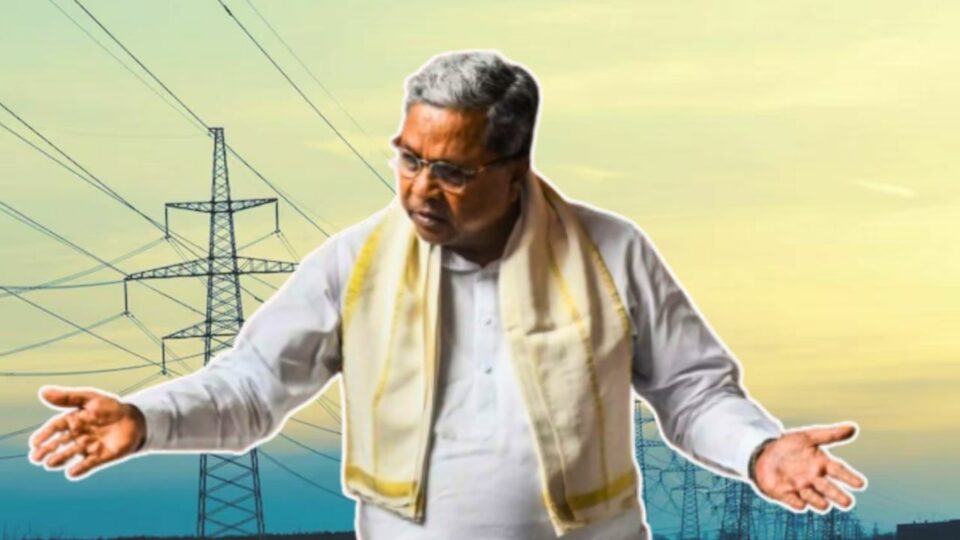HIGHLIGHTS
Severe power shortage of 3,000 to 5,000 mw and state heading towards highest ever peak demand for 18,214 mw
Monthly state demand increased by 32% from last year
Govt is left with an option of curtailing load to 1500-2000 mw to maintain grid stability but warns it may give rise to other unforeseen problems
State to face daily energy shortage of 40-50 MUs
Provisional tariff payable by ESCOMs is Rs 4.86 per unit
Amid rapidly increasing power demand and constraints in its supply, the Karnataka Government has invoked a Section11 of the Electricity Act, 2003 directing the state embedded generating companies/generators to supply energy to the state subject to determination of final tariff by Karnataka Electricity Regulatory Commission (KERC). The government’s directive comes when due to burgeoning demand and an energy requirement the state electricity supply companies (ESCOMs) are facing severe shortage of power to an extent of 3,000 to 3,500 mw. The state is likely to reach a peak load of 18,214 mw and around 357 million units (MUs) per day during the coming months (from November 2023 to May 2024).
Section 11 of the Electricity Act, 2003 reads ‘’Appropriate Government may specify that a generating company shall in extraordinary circumstances operate and maintain any generating station in accordance with the directions of that Government.’’
The Karnataka government in its order said even though the installed capacity is around 32,000 mw meeting the increased demand during the coming months would be a challenging task because more than 50% of the installed capacity is from renewable energy source which is infirm/uncertain in terms of meeting the round the clock (RTC) demand. Karnataka’s electricity demand is currently met from Karnataka Power Company Ltd (KPCL) thermal and hydro plants, central generating stations (CGS), Udupi Power Corporation Ltd (UPCL) Renewable Energy, swapping from other states and different segments of power exchanges. ‘’Due to an increase in demand, the state is experiencing a major power crisis on account of a failed monsoon and increased demand from agricultural consumers,’’the order reads. The present energy available from major hydro reservoirs for the current year is short by about 3000 MUs.
The state has recorded peak demand of 16,950 mw and energy consumption of 294 MU in August 2023, due to deficit monsoon leading to distress situation forcing the state laid dispatch centre (SLDC)to take load management measures since August. Dependence on the power market to meet the increased demand alone may lead to uncertainty in availability. The monthly state demand has increased as compared to previous year to an extent of 32%. Due to rise in demand, Karnataka is expecting a daily energy shortfall to an extent of 40-50 MUs.
Additionally, the power availability in the market is minimal due to continued dry spells in the absence of normal monsoon and increased demand in the state. According to the state government, in the prevailing increased means situation, one of the options left is to curtail the load to an extent of 1500 to 2000 mw to maintain grid stability as mandated by Central Electricity Regulatory Commission and JERC Regulations and orders. ‘’However, the curtailment of load may give rise to other unforeseen problems,’’the order warns.
In view of the present critical situation, the state government has directed that ESCOMs shall pay at Rs 4.86 per unit provisionally subject to KERC orders there on. The balance capacity of UPCL plant,over and above the contracted capacity with the ESCOMs under the power purchase agreement (PPA) shall be supplied to the state at PPA rates. Joint meter reading shall be the basis for raising the monthly invoices.
Further, rebate of 2% shall be allowed on the bill amount if payable is made within 5 days from the date of presentation of bill or otherwise 1% shall be allowed if the payments are made within 30 days. Due date for making payment shall be 30 days from the date of presentation of the bill. Late payment surcharge shall be payable at one year marginal cost of lending (MCLR) of the State Bank of India issued on April 1 plus 350 basis points, per month, if the payments are made beyond the due date.
The Jurisdictional Distribution Licensee shall deduct the energy at 115% for the energy, if imported by the generators covered by the Section 11 order. Moreover, energy injected by generators under Section 11 shall be allocated amongst ESCOMs as per the quantum approved by KERC in the Tariff Order dated May 12, 2023 for FY24.
These directions shall not be applicable for the intra state generators who are having valid PPAs with the Distribution Licensees in Karnataka. All ESCOMs shall file a petition within 15 days from the date of the order before KERC for approval of tariff specified in the order.
As an independent media platform, we do not take advertisements from governments and corporate houses. It is you, our readers, who have supported us on our journey to do honest and unbiased journalism. Please contribute, so that we can continue to do the same in future.

